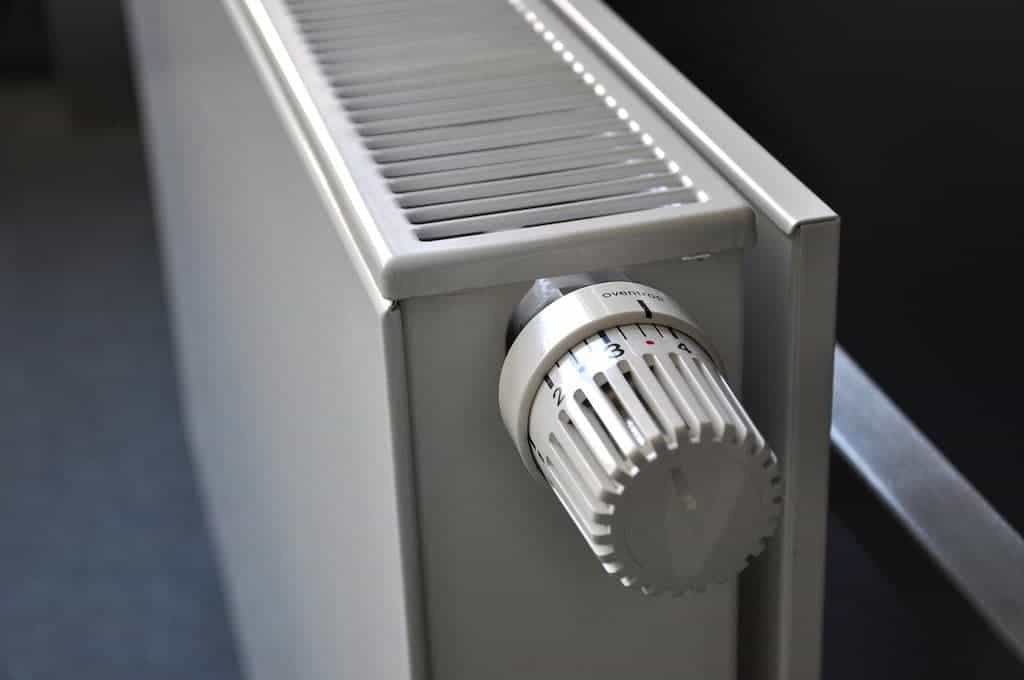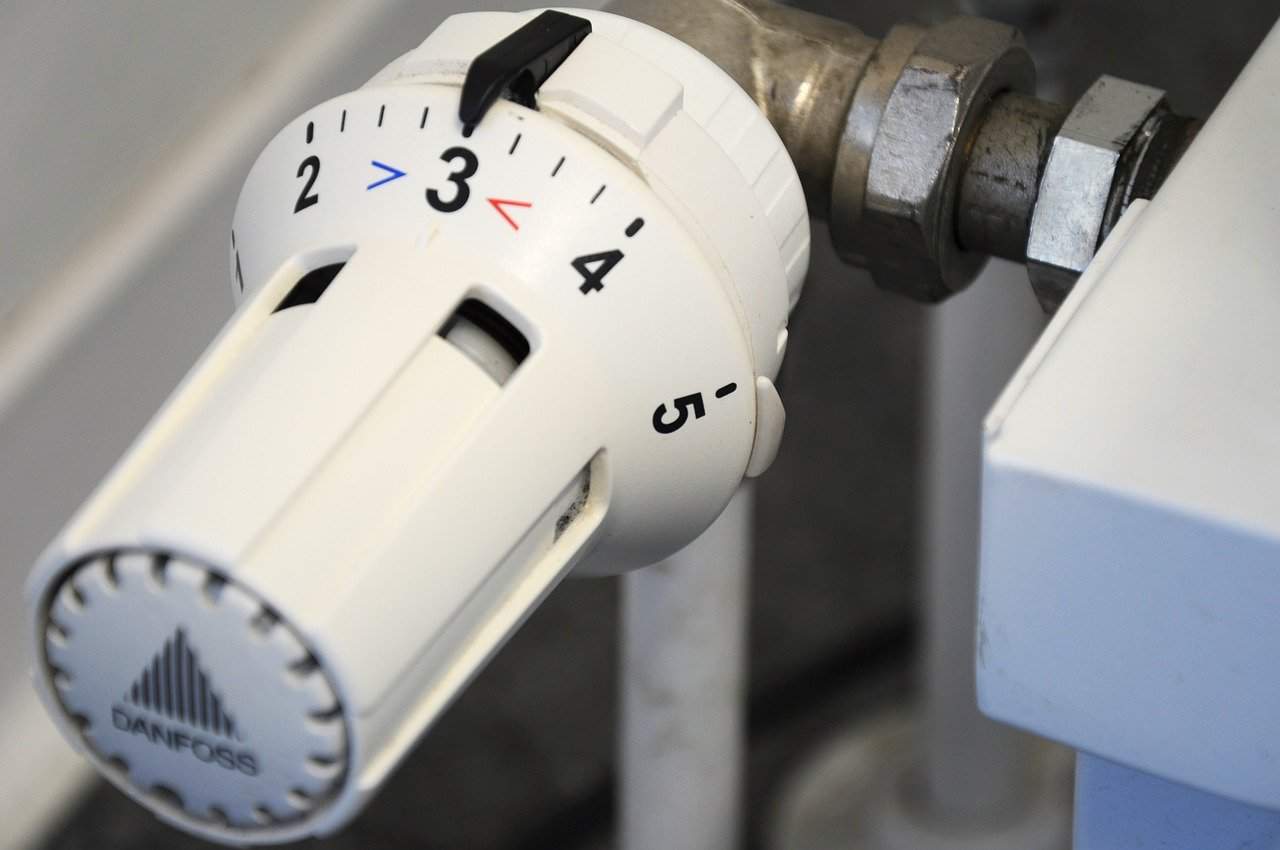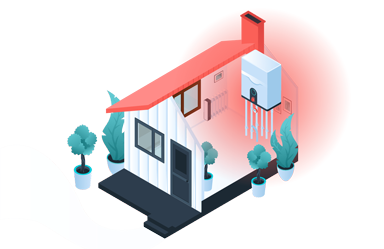A Step-by-Step Guide to Balancing Radiators By Yourself
If you are frustrated with unbalanced radiators making parts of your house colder than others, this is the guide for you. We will explain exactly what radiator balancing involves, how it helps, and how you can do it yourself.

It’s the coldest time of the year and the one place everyone wants to be snug and warm is at home. So, there is nothing worse than finding that some radiators (and therefore some rooms) in your home are getting warm, whilst others have cold spots.
It is a very common problem and one that can be hugely frustrating for anyone that doesn’t know how to fix it. But there’s good news. Solving this problem is a relatively simple task and is something that can be done by anyone who is half-competent at DIY.
The most common solution is that your radiators need balancing. If this is a term you haven’t come across before, don’t worry. In this guide, we will explain what balancing a radiator is, how it works, and most importantly, how you can do it.
Why Balance the Radiators?
In the cold winter months like this, warm radiators are essential. Yet, it is also this time of year when unbalanced radiators in your home really become an issue.
Unbalanced radiators don’t heat up at the same rate as each other resulting in some rooms in your home feeling much colder than others. If the problem isn’t dealt with, it can quickly develop into a big issue and make you feel uncomfortable in your own home.
The issue can vary from one radiator not getting hot while another gets hot very fast, to being an issue which affects multiple radiators throughout your home.
The solution is to balance your radiators. What this does is to match the speed at which different radiators heat throughout your home. When done properly, balancing radiators can solve the problem of some radiators being too hot and others too hold and leave you with a warm and cosy home throughout these bitterly cold winter months.
Why Not Just Bleed Your Radiators?
The one bit of radiator maintenance that most people have heard of is bleeding radiators. Many of you will have a radiator bleed key and may well occasionally go round your home with a bit of kitchen towel turning the lock on all your radiators until the fluid inside runs out.
This is a great solution to the problem of air being trapped in your central heating system. If there is air in a radiator, the hot liquid that heats your radiators up cannot fill the whole radiator and as a result, it won’t get as hot.
Bleeding a radiator resolves this issue. But it is only part of the solution to an unbalanced heating system. If your radiators have become unbalanced, bleeding them alone will not solve the problem.
To fix your system, you will need to balance your radiators, and here is our step-by-step guide on how to do just that:
How to Balance Radiators – A Step-By-Step Guide

Before we explain how to balance your radiators, there are a few tools that you will need to have at the ready. So, before you go any further, pop out to your garage, shed, or local DIY store and make sure you have the following:
- A radiator bleed key
- A lockshield valve key
- A screwdriver
- A digital thermometer or multimeter with thermometer
Once you have got these simple items together, you are ready to start:
Step One: Turn the heating system off
To balance your radiators successfully, you need to carry out this process with them all completely cold. This means the first step you need to take is to switch off your home heating systems and wait until the system has cooled down.
Step Two: Bleed your system
To get accurate measures of your radiator’s temperatures, you will ideally want to have bled all of your radiators before you start.
If you have bled the system recently, you can skip this stage, but if you are unsure, it is a good idea to go around and bleed all of your radiators now.
Step Three: Prepare your radiators valves
Balancing your radiators involves having access to the lockshield valves of all your radiators. You will need to remove all the valve caps. Some will be push caps and some will be screw caps. Others may need a screwdriver to be removed.
Most systems will have the same types of caps on each radiator but if you have replaced some radiators but not others, these may differ.
At this stage, you should also note if your radiator has a Thermostatic Radiator Valve. Most modern radiators do, but some older models will not.
Step Four: Open your radiator valves
Next, you will need to open your radiator valves. This usually involves turning them in an anti-clockwise direction (to the left).
This can often be done by hand, but if you find yours are a little stiff, use your lockshield valve key instead.
Step Five: Switch the heating back on
With the valves all unlocked, you will now need to switch your heating system back on.
As your radiators begin to heat up, take note of the speed at which each radiator is warming up. It can help to enlist the help of friends and family to do this otherwise you will find yourself running frantically from one room to another trying to note the temperatures of all your radiators at once.
It is normal for the radiators closest to the boiler to heat up the fastest. By the time they are fully heated up, you should have a list that ranks which radiators warm up the fastest and which the slowest.
Step Six: The fastest-heating radiator
The first radiator to work on is the one that heated the fastest. Turn the lockshield valve in a clockwise (right) direction to close it. Once it is closed, open it up by exactly a quarter of a turn.
Step Seven: Measuring the temperature
Now you will need to take some temperature readings on your fastest-heating radiator.
Using your digital thermometer (or multimeter with thermometer), take a temperature reading from the pipework next to the valve.
Next, take the temperature from the pipework on the opposite side of the radiator. If your radiator is a modern one, this will be next to the thermostatic valve.
Keep checking the two temperatures until the difference between the two is exactly 12°c. When it reaches this amount, close the lockshield valve again.
Do bear in mind that this process can take a few minutes, so you will need to be patient.
Step Eight: Repeat this process with your other radiators
You will now need to repeat this process working down your list of radiators from the second-fastest to heat all the way down to the slowest.
This process will take longer as you get through each new radiator on your list. When you are getting towards the slowest radiators, you may even find you have to open the lockshield valve up more to adjust the temperatures.
Result: A balanced heating system
Once you have finished balancing radiators, you are done. Your radiators are now balanced and the dispersal of hot water from your boiler should now be reaching the furthest radiator from as evenly as it is reaching the closest.
Now when you come home from work on a cold winter’s night, all of your radiators should be warming up equally and at the same speed. All you’ll have to worry about if whether you are going to have a cup of tea or a hot chocolate while you snuggle up to watch TV that night.
What to Do if This Doesn’t Solve the Problem?
In most cases, balancing radiators should solve the problem of some rooms being warmer than others. But there will be a few cases when it doesn’t.
If you are one of the unlucky ones, the best advice is to call out a heating engineer or plumber to give you a professional opinion.
The best-case scenario is that there might be a simple issue with either your pipes, your radiators, or your boiler that they can easily fix. But in the worst-case scenario, you may discover that you need a new boiler.
Get the Cheapest Boiler and the Lowest Installation Costs
If you do end up needing a new boiler, don’t worry. It needn’t be the end of the world. While boilers can prove to be expensive to buy and costly to fit, there is one website out there that can offer you a great deal on a new boiler and great installation rates too. We recommend you try Heatable.
Heatable is a unique boiler quotation and installation service. They teamed up with most boiler manufacturers, including Worcester Bosch — one of the best brands in the business, so are now offering some of the best prices in the market.
When you visit the Heatable site, you will fill in a form with all the details about your home, your heating systems, and what you want from your new boiler. They will offer you the most competitive quotes around for the best Worcester-Bosch boiler to suit your needs.
By using Heatable, you can also save money on your installation costs.
Heatable installation prices are, on average, a third cheaper than those offered by a regular heating engineer. What’s more, they can also install your new boiler as quickly as the following day.
Heatable specializes in gas boilers, but they can provide LPG boilers, too. If you need a quote for a LPG boiler, just contact Heatable directly and their helpful team will be able to assist.
If you are still worried about the upfront costs, there are also finance options available.
Don’t Just Take Our Word For It
If you want to know what other customers think of Heatable, then look no further than Reviews.co.uk. They rank Heatable at 98%. They get a 5-star reviews score; actually 4.92 out of 1,200+ reviews. Which is great.
Heatable are already one of the most trusted boiler sales and installation sites on the internet.

What’s Next?
There is nothing worse than getting home on a cold winters night and finding half your home is colder than the other half. But if your radiators are not heating up evenly, this is what happens.
Fortunately, there is a simple solution to this issue. In this article, we have explained everything you need to know about balancing radiators and also provided a step-by-step guide on how to go about doing this simple DIY task yourself.
In the unlikely event that balancing radiators doesn’t deliver results, we have made some suggestions about what else you can do.
Have you had problems with unbalanced radiators? How did you resolve them? Do you have any extra tips for our readers that we haven’t covered in this guide?
If so, it’s always useful for people to hear what other readers have to say, so please do share them with us using the comment box below.
